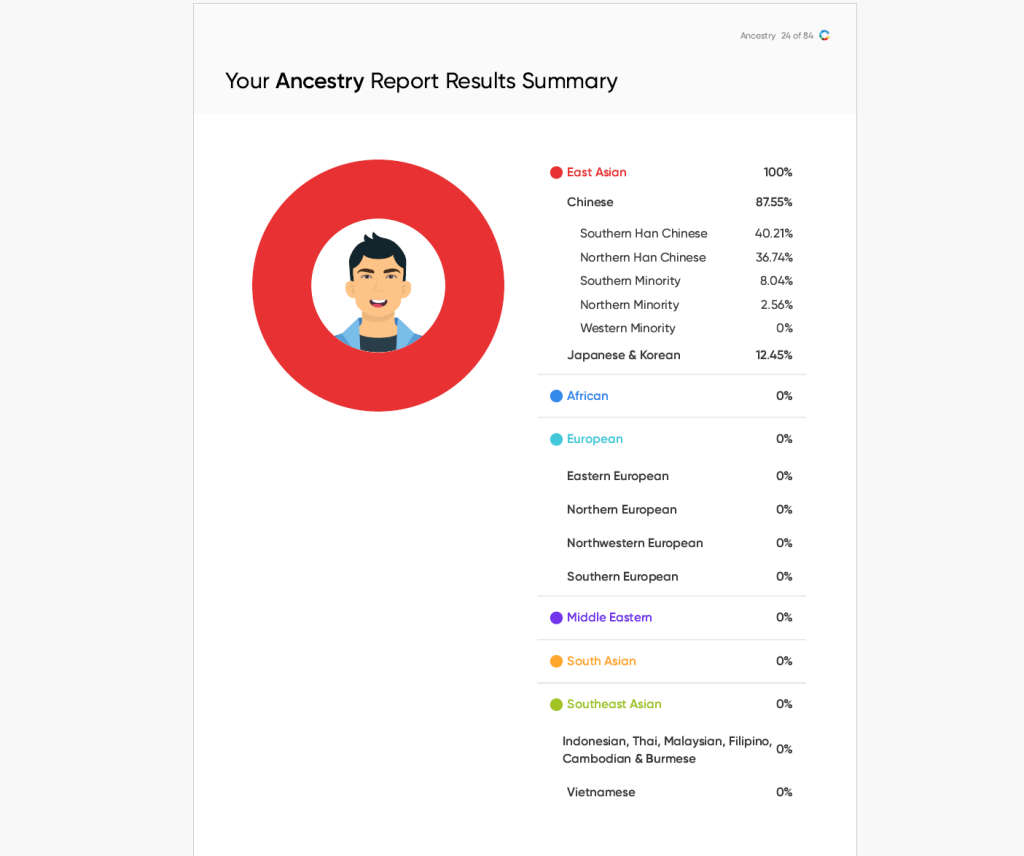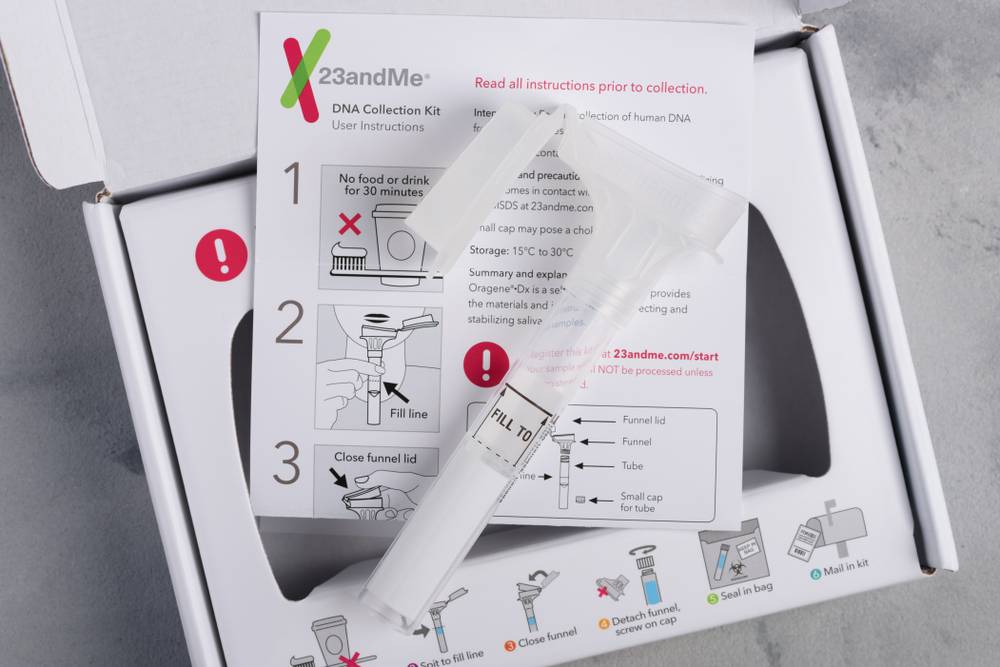A Journey into Your Genetic Heritage
Curious about where your ancestors came from? Ancestry DNA testing offers a fascinating look at your ethnic background, linking you to populations around the world. By analysing your DNA and comparing it to global genetic patterns, these tests reveal much about your family’s origins.
These services are offered by large businesses such as 23andMe and Circle DNA, as well as firms with offices in South East Asia such as Imagene Labs, and easyDNA. Customers typically purchase a kit with instructions on collecting a saliva sample, which is then mailed back to the company for processing.
How Does Ancestry DNA Testing Work?
Ancestry DNA testing has become a popular way for people to explore their family history and uncover their genetic heritage. These tests reveal where your ancestors lived, how they migrated, and the genetic connections you share with populations around the world. Whether you’re looking to connect with distant relatives or gain a deeper understanding of your roots, ancestry DNA testing offers insights into your past that were once unimaginable.
However, experts caution that the results are best viewed as estimates rather than definitive answers.
Joe Pickrell, a geneticist, shares with Vox, “Even though genetic ancestry tests deliver precise percentages about our heritage, the reports are best thought of as estimates, based on imperfect data”.
With each company using different reference databases and algorithms, results can vary, and the science is not without limitations.
At its core, ancestry DNA testing examines your genetic code—the billions of DNA bases that make up your genome. Your DNA carries inherited information passed down through generations, making it a powerful tool for tracing your family’s history. These tests analyse specific markers that differ slightly between individuals and populations. By comparing these markers to vast genetic databases, ancestry companies can estimate your ethnic origins and even track the migration routes your ancestors took over thousands of years.
What makes this process fascinating is how your DNA tells the story of your lineage. The DNA you inherit from both parents contains a mix of information from generations past. By comparing it to reference populations worldwide, ancestry tests connect the dots, showing where your ancestors likely lived and how they moved over time.
But how does this work? It all starts by analysing the different types of DNA passed down through your family, each providing unique clues about your origins.
1. The DNA Types Tested for Ancestry Insights
Ancestry DNA testing uses different types of DNA to provide a detailed view of where your ancestors came from. Each type of DNA reveals a different part of your genetic history:
- Autosomal DNA: This type of DNA is inherited from both your mother and father, and it contains a mix of genetic information from all your ancestors within the past five to eight generations. Autosomal DNA testing is the most commonly used method in commercial ancestry tests, such as those from 23andMe or AncestryDNA. By analysing this DNA, the test can estimate your ethnic makeup from various regions around the world, reflecting your entire family tree, both paternal and maternal.
- Y-DNA: Only inherited by men from their fathers, Y-DNA traces your direct paternal line. It changes very little across generations, making it useful for tracking the deep roots of your paternal ancestors, often going back thousands of years. Since women do not carry Y-DNA, this test is only available to men, but women can still learn about their paternal ancestry by having a male relative, such as a brother or father, take the test.
- Mitochondrial DNA (mtDNA): Mitochondrial DNA is inherited from your mother and is passed down to both men and women. Like Y-DNA, mtDNA changes very little over generations, making it useful for tracing maternal ancestry over long periods of time. Testing mtDNA can reveal ancient maternal lineages and uncover how your mother’s ancestors migrated over thousands of years.
2. Understanding Genetic Markers
The key to ancestry DNA testing lies in the analysis of Single Nucleotide Polymorphisms (SNPs), which are small variations in your genetic code. SNPs are tiny differences at specific points in your DNA sequence, where one base—A, T, C, or G—varies from person to person. These variations naturally occur and pass down through generations, making them valuable markers for tracing ancestry.
What makes SNPs so useful in ancestry DNA testing is how they cluster in specific populations. Over thousands of years, isolated communities developed unique patterns of SNPs due to migration, genetic drift, and geographical separation. By analysing millions of SNPs in your DNA, ancestry tests can match your genetic profile with these established patterns, linking you to populations from specific regions.
Yaniv Erlich, Chief Science Officer at MyHeritage, explains, “You remove the cell debris, proteins, all of the things that are not DNA… [then] make copies of your DNA, then break those strands up into shorter chunks”.
These shorter chunks are then fed into a machine called a genotyping array, which helps identify the specific SNPs you inherited.
Watch now: What Are The Types Of Genetic Materials In Our Body?
3. How Databases Connect You to Global Populations
The power of ancestry DNA testing comes from comparing your genetic information to large DNA databases. These databases, built over years of research, contain data from people with well-documented ancestry in specific regions. By comparing your DNA to these reference populations, the test can estimate where your ancestors likely lived.
Each reference population represents a specific region or ethnic group. The more extensive the database, the more accurate your results will be. For example, if your DNA closely matches populations from Southeast Asia, the test can assign part of your ancestry to countries like Thailand, Vietnam, or the Philippines. As more people contribute their DNA, these databases become more refined, improving the accuracy of ancestral origins.
Pickrell cautions that “the reference groups used by each company are constantly evolving, and this can affect the accuracy of your ancestry breakdown”. Over time, your results may even change as companies update their data with more users and refined algorithms.
4. The Blending of Ancestries
One of the most fascinating aspects of ancestry DNA testing is how it reveals admixture. Admixture is the blending of genes from different populations. Throughout history, migration, trade, and intermarriage between groups have mixed genetic material. This creates a diverse and unique combination of DNA in each individual. Your ancestry can reflect contributions from multiple regions.
For example, you may have mostly East Asian ancestry but also carry DNA segments that match Central Asian or European populations. This reflects historical movements of people across continents, such as the Silk Road or colonial expansions. Admixture testing captures this complexity by identifying DNA from different regions, showing how these populations contributed to your genetic heritage.
Admixture is particularly important in regions like Asia. Centuries of migration and cultural exchange have led to a rich mix of ethnicities. By detecting admixture, ancestry DNA testing provides a more detailed view of your heritage, often revealing connections you may not have expected.
5. Your DNA Results
After analysing your DNA, the test presents a breakdown of your genetic ancestry. It shows what percentage of your DNA comes from different regions. These percentages reveal which regions contributed to your genetic makeup.

For example, your results may show 60% of your DNA is linked to East Asia, 20% to South Asia, and smaller percentages to Central Asia or Oceania. These percentages are based on how similar your DNA is to the reference populations stored in the company’s database.
It’s important to remember that these percentages are estimates, reflecting the likelihood that certain parts of your DNA come from particular regions. Advances in genetic research and larger reference databases have made these estimates more accurate, but due to the complex history of human migration, the results might still group regions together, such as “East Asia” or “Southeast Asia,” rather than specifying individual countries.
The Limitations of Ancestry DNA Testing
While ancestry DNA testing provides valuable insights, it has limitations. Erlich notes that even though genotyping arrays are highly accurate, they can still have small errors.
“We’re talking about 99.9% accuracy for these arrays, [but] you might get 1,000 errors when processing a million places in the genome”.
These minor inaccuracies can lead to slight differences in results, even between closely related individuals.
DNA alone cannot capture the full complexity of your family history—cultural, social, and historical contexts play significant roles that genetic testing cannot fully explain. A spokesman for easyDNA, shared with The Straits Times: “We always highlight to clients that genetics are only a component of health, environment and other factors have major influences too.”
Read more:

